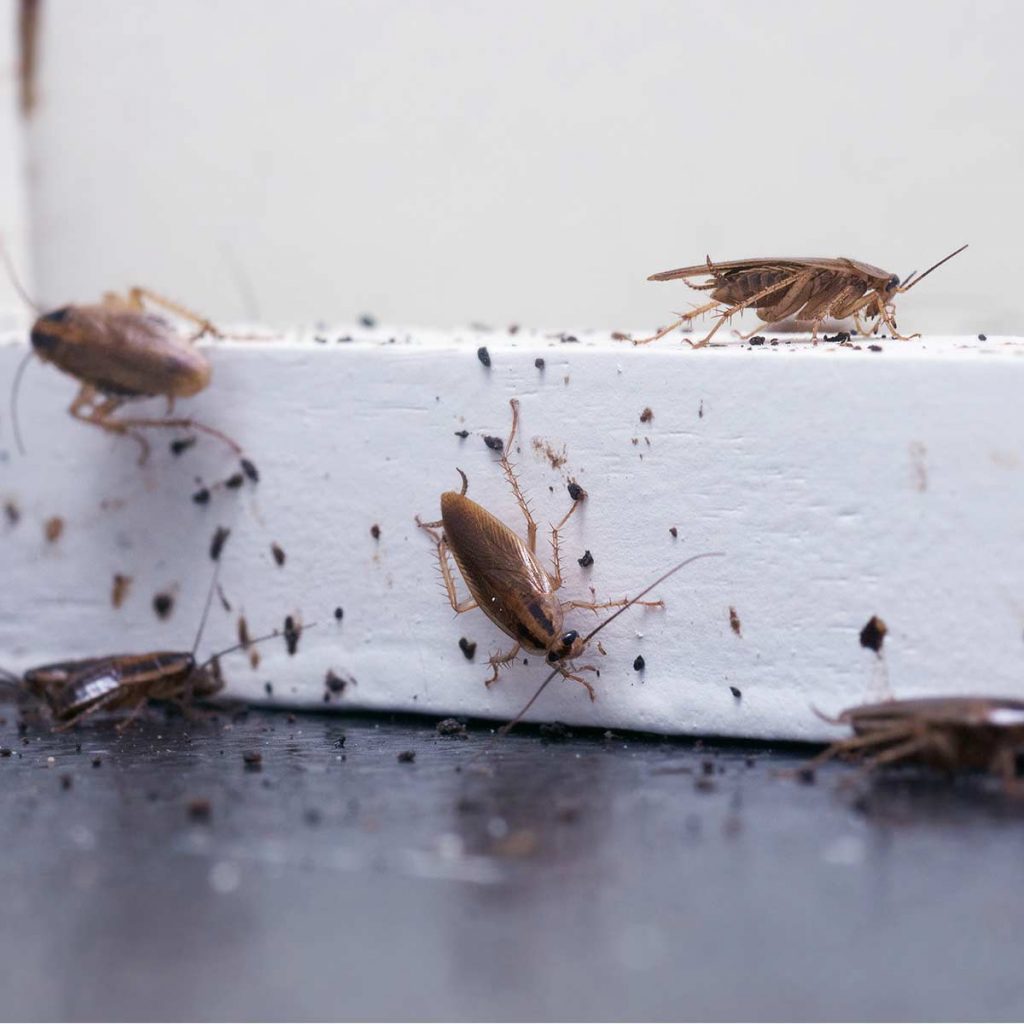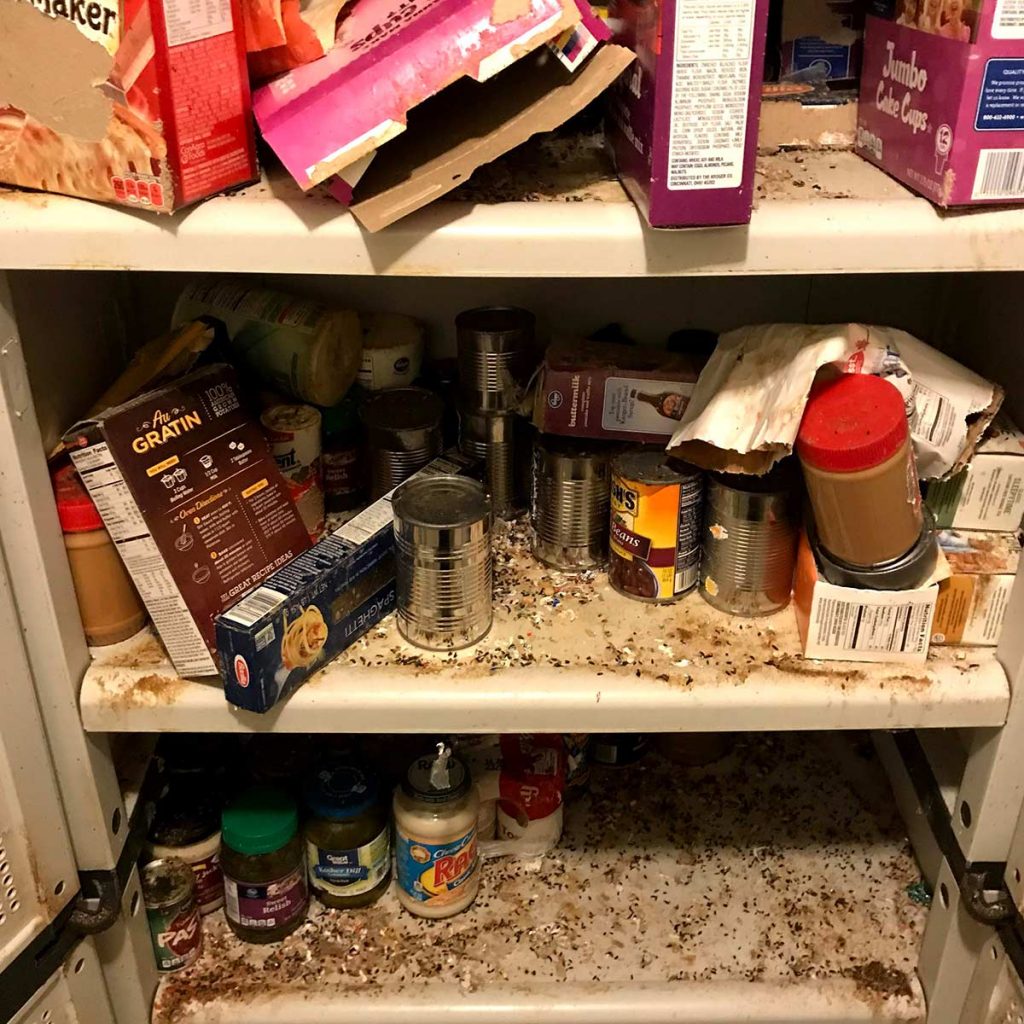Cockroaches are ridiculously resilient. So resilient that some biologists believe they would outlast all other species on Earth in many environmental scenarios. Be that as it may, we humans have no plans of surrendering our homes to them just yet, so the battle against the bugs rages on. Some roach infestations can be successfully treated with over-the-counter remedies, but if a colony achieves a certain size, you may need to enlist a professional. So how many roaches is enough to worry about? Hundreds? Dozens? Is one cockroach a problem?
The short answer is that even one roach should be dealt with promptly. You may be able to handle a small roach problem yourself, but you’ll need to act quickly, and it may mean getting your hands dirty. This article will get you started down the right path, whether that means running to the hardware store or doing the ol’ “pest control near me” Google search.
How to Gauge the Size of a Cockroach Problem
First the bad news: roaches are not solitary creatures; they like being around lots of other roaches. If you’ve only seen one cockroach, it is possible that it was traveling alone, but the odds are not in your favor. Unless you were lucky enough to spot that first, lonely, advance scout that came into your home, one roach almost always indicates multiple roaches. It’s time for some detective work, whether you do it yourself or hire a pest control professional to take over. The following are some clues to watch for.

Clue #1: Daytime Cockroach Sightings: Not a Good Sign
Like many other sneaky scavengers of the animal kingdom, roaches are primarily nocturnal. The most common reason for seeing one during the day is that their current living space is overcrowded; big red flag.
Almost as bad as the daytime cockroach sighting is the dreaded nighttime flipping-of-the-light-switch sighting, in which you see masses of tiny bodies vanish from the light with unnerving efficiency. If you’ve seen either of these phenomena, it’s very likely time to call a professional.
Clue #2: Cockroach Feces
Roaches are pooping maniacs, and they’re not particular about where they do it. You may find feces anywhere along their traffic routes, which may take them:
- Behind kitchen appliances
- Inside cupboards
- Under sinks
- Anywhere food is stored
- Pipes and other surfaces in crawl spaces
- Standing water anywhere in the building

Clue #3 Cockroach Exoskeletons
If you’re not grossed out yet, let’s move on to the zombie-like skin casings that roaches shed as many as a dozen times as they grow from tiny tikes into full-blown cupboard monsters. This is often a sign of a well-established colony.

Clue #4: Cockroach Egg Cases
Roaches don’t lay single eggs. They produce long cases of eggs called oothecae, and each case contains as many as 50 eggs. If you see one or more egg cases, you probably have a significant roach problem. Collect any casings you find, and either crush them or douse them with insecticide, then dispose of them in a sealed bag in an outdoor trash receptacle.

Clue #5: A Quick Search Exposes More Roaches
Grab a flashlight and look for roaches in the dark. In the daytime, check the dark places like lightless pantries, cupboards, and crannies. Look behind stored food packages and check behind appliances. If you have more than one cockroach, it probably won’t be hard to find further proof.
How to Get Rid of Cockroaches
Find the Roach Colony
If you hope to take the situation into your own hands, continue your search until you locate the colony. Cockroaches are poor housekeepers, so you’ll know you’ve stumbled upon their secret lair when you find large numbers of bugs—both alive and dead, shed exoskeletons, egg cases, and feces.
Spread Boric Acid

Boric acid powder is relatively harmless to humans and pets, but it’s deadly to roaches. Sprinkle the powder along roach traffic routes, and they’ll pick it up on their legs and wings, carrying it back to the colony to share with others. As they groom themselves, they ingest the acid, which causes fatal damage to their nervous systems. If they don’t groom themselves, the chemical is absorbed through the exoskeleton, with the same results.
Set Up Poison Bait Stations
Once you’ve found the colony, poison bait stations can be very effective against large roach populations. These should be placed along any traffic routes you’re able to identify leading to and from the colony.
Block Roaches’ Entry Points
The bugs got into your home or business somewhere, and until you locate and correct this breach, you’ll continue to be vulnerable to future attacks. The most common roach entry points are around doors, windows, vents, and pipes, where seals can weaken over time. Then the solution is simple: fill any gaps you find with caulk, steel wool, or fine wire mesh.

Remove Roach Food Sources
Like most animals, roaches will take the easiest meal they can get, so don’t attract them by making food easy to reach. Housekeeping tips:
- Promptly clean up food spills
- Promptly clean up grease and other residues on counters and stove tops.
- Take out garbage that has food in it before nighttime.
- Put pet food away at night.
- Wash dishes after meals.
- Vacuum, sweep, and mop regularly.
Remove Roach-Harboring Clutter
If you’ve already done your roach search, you’ve probably figured out that they’ll use any sort of clutter as a hiding place. Boxes, stacks of magazines and newspapers … basically anything that sits undisturbed in one spot for a while is a potential roach sanctuary. Decluttering can go a long way toward solving roach problems and preventing future infestations.
Repair Leaks to Deprive Roaches of Water
Roaches need to same things as any animal: food, warmth, and water. Take away any one of these elements, and infestation is far less likely. If you have plumbing leaks anywhere inside your property—even in crawlspaces—roaches will be far more likely to set up housekeeping. You’re also more vulnerable if outside water is leaking into a basement or crawlspace.

Call for Professional Pest Control Help
If you’re fighting a small number of roaches, you may have success using only boric acid. If it’s a small to medium-sized colony, you may win the battle with boric acid plus bait stations plus all the other tips we’ve provided here. But larger infestations usually require special expertise to overcome because it’s hard to kill every last bug without leaving a few stragglers alive to breed.
Go Green Pest Control professionals use their understanding of cockroach biology and behavior to positively identify traffic patterns, then establish treatment plans that target every last pest in a given population.
Are Cockroaches a Health Hazard?
Yes, their reputation as “nasty creatures” is well earned. Roaches can carry pathogens from one place to another, so the bacteria they pick up while munching on a lost morsel of rotten meat behind a cupboard can be carried to countertops and food storage areas as they continue to forage. Their feces, saliva, and—oh, yes—shed body parts can trigger allergies and asthma, potentially complicating other respiratory conditions.

How to Keep Cockroaches Away Forever
Every building, whether it’s a home or business, exists in an ecosystem. Even in the heart of a city, animals of all kinds move freely among humans and our structures, often crossing paths with us, sometimes helping themselves to the food, water, and warmth we provide. Because these ecosystems change over time, there’s no guarantee that roaches won’t be compelled to try and enter your property at some point in the future. The only way to prevent it is to keep a clean place, a tight perimeter, and a keen eye out for any telltale changes to the immediate ecosystem before they become problems.
That can be a lot to add to your plate as property owner, which explains the rising popularity of Integrated Pest Management (IPM) plans. This basically means that you put a pest control company on quarterly retainer to inspect and treat your property with enough frequency to keep pests from ever gaining a foothold. It’s extremely affordable, and it really is the only way to get a professional guarantee against cockroach problems.
It’s also relevant that an IPM plan is, by definition, part of a green pest control strategy that keeps unwanted pests away with minimal risk to non-targeted species in and around structures.
Learn more on the Go Green Pest Control website, or give us a call to chat with a professional: (316) 733-0687 in Wichita or (785) 377-0687 in Manhattan and Junction City.














